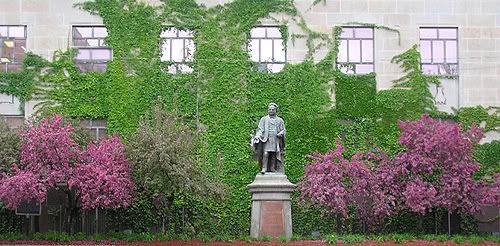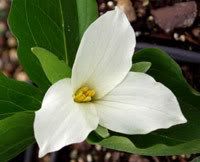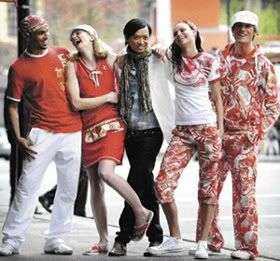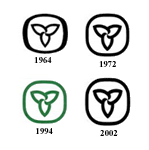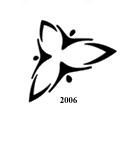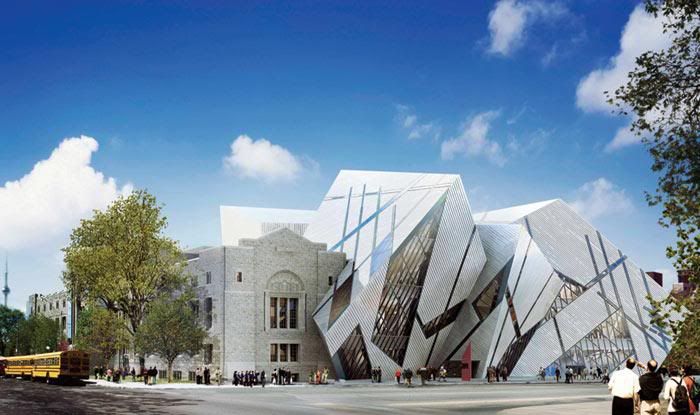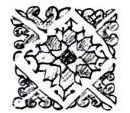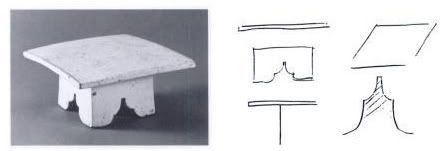Can we regain our national symbols in time for Summer 2008?Note: I sent this article to around 37 Ontario papers (and 3 national ones) and so far have received responses from two papers. And those two asked if I was living locally - in Hamilton or Guelph. If a provincial, and even a national, issue like the desecration of true blue Ontario symbols does not garner attention from publishers, then I don't know what will. I'm still waiting, though.Trillium grandiflorumI’ve always said that a country with no clear national symbols is likely to grab whatever one catches its fancy. Well, in Canada, we have just crossed that threshold with our Team Canada Olympics uniform for 2008.
The 2008 Summer Olympics uniformThere has been a surprising amount of negative reaction to the initial unveiling of the uniform, but much of it is on the wrong track. People are subconsciously reacting to the bad idea, that generated other bad ideas, ad infinitum. Most of the reaction concerns the ungainly print that makes up the Olympics Village-wear sets, some calling them pajamas, others saying they resemble costumes for a circus troop. Politicians (from the opposition, of course) are irate about the non-Canadian manufacturing source of 80% of the uniform. They are, not at all ironically, Made in China.
Changes in the Ontario logo between 1964 and 2006So, what is the real story? Here in Ontario, the provincial logo of a stylized
Trillium grandiflorum was transformed in 2006 into what looks like a group of people stringed together by triangular hooks. Probably only those privy to the original trillium logo would be able to recognize the flower in this new design. The trillium was originally proposed as a flower to place on the overseas graves of Canadian servicemen from the First World War. Although that was not adopted, the flower was later taken up as the provincial emblem in 1937. It was later incorporated into the provincial logo in 1964. Unlike the precarious linking of anonymous stick figures, this original logo was a real, recognizable part of the Ontario landscape translated into a ubiquitous, powerful and beloved motif.
This is where the 2008 Olympics symbolism starts to make sense. The designers, two Asian-Canadians, Tu Ly and Vivienne Lu, under the direction of Suzanne Timmins of the Hudson Bay’s Company, claimed that they were fusing cultures and symbols when designing the Olympics uniform. "We are the world, we are the children…" It’s beginning to sound like the hooked stick figures in the new trillium logo. But, it is all even more insidious than that. The lyrics should be: "We aren’t Canadians, so who are we…."
The Ontario trillium logo has gone through three changes between its inaugural in 1964 and 2002 that were almost identical to the original save a slight thickening of the lines, or a minor lengthening of the flower. But, the final revision in 2006 completely changed its form, because its symbolism also changed. The original logo was a visual representation of Ontario, and what better way to do it than through the landscape, picking the perfect flower right in our very own back yard, created for an infallible design. The 2006 version was a superficial attempt to connect disparate Ontarians in a ring of feel-good unity.
Who are this circle of Ontarians? We are now as much Indian as Chinese, Portuguese as Italian, all hyphenated Canadians. The Portuguese, Italian, Ukrainian and even Jewish members of the hyphenated have managed to blend their lives and aspirations within the original founding of the country and slowly let go of their hyphens. The more current crop of Indians and Chinese have histories and memories so radically different from this country’s and from each others’, that they perennially keep importing, either directly or through community lore, a little bit of their lost and abandoned lands into their new Ontario homes. With such tremendous changes in Ontario’s demography, and probably geography too (who really gets to see trilliums in the retreating woods, anyway), the glue that bind us together is melting away. So much for a circle of unity.
It is no surprise, then, that Ly and his co-designer Lu should get excited about their patterns adorning the Olympics uniforms, with the events taking place on a continent they left generations ago (metaphorically or literally). What an opportunity to regain some of their Asian identity back again. Where these designers got off target, intentionally or not, is in failing to recognize that these outfits are about a Canadian team that is going to China, as a national competitor, and not their visual fantasy of a China transported to Canada, transported back to China by some magical merging of design and geography. And their design director should have alerted them to this, and put a stop to it from the beginning.
But, to the delight of our multicultural hyphenated conglomeration, everyone apparently wants to keep it that way. Asians - South or East, Africans – Caribbean or Mainland, Latinos and all the rest make our cities so colourful, why dismantle them into the boring hegemony of a bland un-hyphenated Canadian? So Suzanne Timmins felt as excited as her two Asian-Canadian designers (judging from the interviews she has given) to let this parody play itself out to its logical conclusion: an abrasive and jarring design with no style or elegance, and with no definable character. Chinese tattoos meshed with Canadian sceneries; China reds instead of autumnal tones; Chinese lucky eights and fire, wood, metal, earth and water symbolisms colouring Canadian landscapes. A confused vision will always give confused creations.
We may think that hyphenated Canadians are part of the “we are the world” crowd of the new provincial logo, all wishing to hold hands to make Ontario a better place. But they are actually extremely exclusive, giving special treatment only to their kind and at any opportunity. And these alternate worlds are increasingly competing with the reality of Canada. Lu and Ly certainly demonstrated that.
Our Canadian athletes have now the added burden of warding off the mixed signals their clothing gives them. If there ever was an unlucky charm, it would have to be their costume, which drains the Canadianness out of the athletes and infuses them with their competitor’s spells. How can a Canadian olympian expect to win a medal for his country if he cannot get his costume, and hence his identity, to mean something to him? In their logical quest to regain their Asian identities, Ly and Lu have made Canadians, athletes and spectators, lose ours.
As fast as our forests with our trilliums are receding, we are now confronted with figures and signs that have nothing to do with our physical landscape. We are faced every day with buildings, signage, holidays and languages whose meanings we know absolutely nothing about, and whose sources are thousands of geographical and symbolic miles away. Without concrete symbols, which we can touch and see and feel, we are prone to accepting anything that comes in our view disguised as the real thing, but which will only confuse and disappoint us like our olympians’ uniforms. And there will be plenty of go-betweens to introduce their symbols to us, all for the sake of making their own alien geographical and cultural links stronger.








